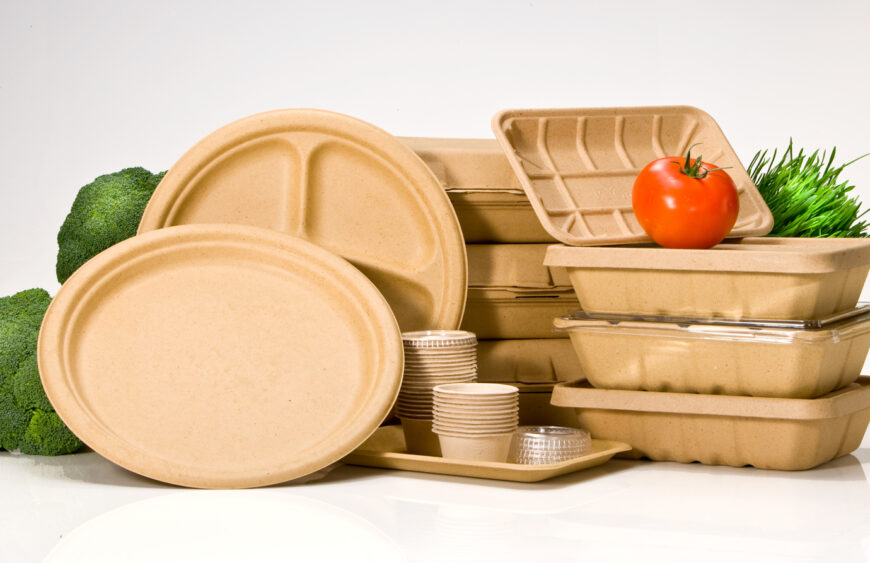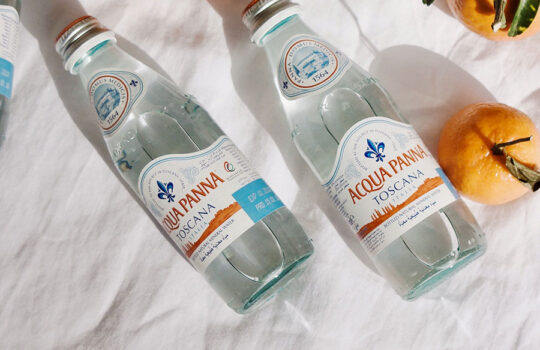Single-use plastics, while convenient, contribute significantly to waste and pollution, which, of course, endangers our environment. This brings us to sustainable practices and the introduction of eco-friendly food packaging.
Selecting the right eco-friendly food packaging is now a necessity for forward-thinking businesses. Making informed choices helps protect the planet and resonates with environmentally conscious consumers.
This post explores the world of eco-friendly food packaging, including its benefits, the various materials available, and tips for choosing the best options for different food products.
Why Embrace Eco-Friendly Food Packaging?
The most apparent benefit is the protection of the environment from unfriendly elements. Eco-friendly alternatives break down more easily or can be repurposed for other uses.
Moreover, using eco-friendly food packaging signals responsible business practices. This alignment with consumer values significantly enhances brand image, fosters customer loyalty, and attracts new customers.
Beyond reputation, sustainable packaging can offer tangible business benefits. While some eco-materials may have a higher initial cost, long-term savings can be realized through reduced waste disposal fees, optimized material usage, and potential government incentives or tax credits related to environmental initiatives.
Top Eco-Friendly Food Packaging Materials
The market offers a growing array of sustainable materials suitable for food packaging. Each has unique properties, benefits, and limitations.

1. Recycled Cardboard and Paper
Sourced often from renewable wood pulp and readily recyclable in most Canadian municipalities. Ideal for dry goods, bakery items, take-out containers, and secondary packaging.
- Pros: Biodegradable, compostable, recyclable, often made with recycled content, customizable printing.
- Cons: Not suitable for wet or greasy foods without special coatings (which can affect recyclability and compostability), less durable than plastic or glass.
- Best For: Dry goods, baked goods, pizza boxes, cartons, shipping boxes.
2. Plant-Based Plastics (Bioplastics – e.g., PLA)
Polylactic Acid (PLA) is derived from renewable resources, such as corn starch or sugarcane. It mimics the look and feel of traditional plastic but is commercially compostable.
- Pros: Made from renewable resources, lower carbon footprint than petroleum plastics, commercially compostable under specific conditions.
- Cons: Not suitable for high temperatures, requires industrial composting facilities, and potentially competes with food crops for land use.
- Best for: Cold cups, deli containers, food wraps, and cutlery.
3. Bagasse (Sugarcane Pulp)
A byproduct of sugarcane processing. This fibrous residue is moulded into containers, plates, and bowls.
- Pros: Made from agricultural waste, a renewable resource, commercially compostable, sturdy, grease and moisture-resistant.
- Cons: Requires commercial composting and may have limitations with very hot liquids over extended periods unless treated.
- Best For: Take-out containers, plates, bowls, clamshells.
4. Moulded Pulp / Fibre
Similar to bagasse, it is often made from recycled paper materials or other plant fibers, such as wheat straw or bamboo, and molded into shapes like trays, bowls, and cup carriers.
- Pros: Often made from recycled content, it is compostable and provides good cushioning.
- Cons: Water resistance varies, and requires composting facilities for breakdown.
- Best For: Egg cartons, cup carriers, produce trays, take-out containers.
5. Reusable Containers
Systems encouraging consumers to use and return durable containers represent a significant shift towards waste prevention.
- Pros: Drastically reduces single-use waste, fosters a circular economy, and builds customer engagement.
- Cons: Requires infrastructure for collection, washing, and redistribution; consumer participation is crucial; and there is a higher initial investment.
- Best For: Take-away meals, coffee cups, grocery programs.

Factors for Selecting the Right Packaging
Choosing the best eco-friendly option requires careful consideration of several factors:
- Shelf Life: How long does the product need to remain fresh? Some materials offer better protection than others. Modified Atmosphere Packaging (MAP) may be necessary, which in turn influences the selection of materials.
- Durability & Transport: Packaging must withstand handling, stacking, and transportation without damage. Lightweight materials save on shipping, but robustness is essential.
- End-of-Life Management: Assess the available disposal infrastructure in the target market. Is commercial composting accessible? Are recycling facilities equipped to handle the chosen material? Misleading claims or a lack of proper disposal options negate environmental benefits. Educating consumers on proper disposal is vital.
- Cost: Evaluate the per-unit cost of the packaging material, as well as any associated machinery or process changes. Balance cost with performance and sustainability goals.
- Regulatory Compliance: Ensure materials comply with Canadian food safety regulations, such as those overseen by Health Canada and the CFIA. This includes standards for materials in direct contact with food and rules around recycled content and labelling.
Conclusion
Choosing the best eco-friendly packaging for food involves balancing product protection, environmental impact, cost, consumer perception, and regulatory compliance.
By carefully evaluating needs, understanding material properties, considering end-of-life scenarios, and partnering with informed suppliers, businesses can make impactful choices.
Sustainable packaging is environmentally responsible and a strategic move that aligns with market trends, strengthens brand reputation, and contributes to a healthier planet for future generations.
FAQs
What is the difference between biodegradable and compostable food packaging?
All compostable packaging is biodegradable, but not all biodegradable packaging is compostable. Compostable materials break down into nutrient-rich compost within a specific timeframe (typically 90-180 days) under controlled conditions, often in commercial facilities. Biodegradable simply means a material breaks down naturally, but without a set timeframe or guarantee that it won’t leave residue.
Is plant-based plastic, such as PLA, always the most eco-friendly option?
Not necessarily. While PLA is made from renewable resources and is commercially compostable, its production can involve intensive agriculture. Crucially, it requires industrial composting facilities for proper breakdown and can contaminate conventional plastic recycling streams if disposed of incorrectly.
Are paper or cardboard containers suitable for all types of food?
Standard paper and cardboard are excellent for dry goods but lack resistance to moisture and grease. For wet or oily foods, they often require plastic or wax coatings. These coatings can sometimes hinder recyclability or compostability. Look for uncoated options or those with certified compostable linings if composting is the intended end-of-life.
How important is local recycling/composting infrastructure when choosing packaging?
Extremely important. Choosing a recyclable material is only beneficial if consumers have access to facilities that accept and process that material. Similarly, selecting commercially compostable packaging is ineffective if there are no local industrial composting programs available.
What regulations impact eco-friendly food packaging in Canada?
Key regulations include the federal Single-Use Plastics Prohibition Regulations, which ban certain items, as well as upcoming requirements for minimum recycled content in plastic packaging and rules surrounding labelling.






